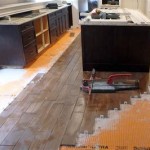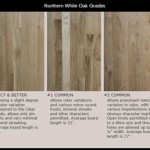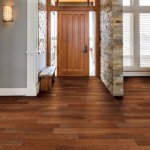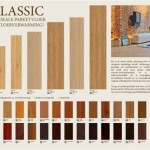Essential Aspects of Laminate Flooring Underlay Types
When installing laminate flooring, the underlay plays a crucial role in determining the longevity, comfort, and noise reduction of your floor. Choosing the right underlay type is essential to ensure a successful installation and a satisfying flooring experience. Here's a comprehensive guide to the different types of laminate flooring underlays and their key characteristics:
1. Foam Underlay
Foam underlays are the most popular option due to their low cost and ease of installation. They provide good sound absorption and can help level minor subfloor imperfections. However, foam underlays are not as durable as other types and may compress over time, leading to a softer feel and potential cracking of the laminate flooring.
2. Cork Underlay
Cork underlays offer excellent sound insulation and thermal resistance, making them a premium choice for reducing noise and providing underfoot comfort. Cork is also naturally antimicrobial and insect repellent, providing added protection for your flooring. However, cork underlays are more expensive than foam and may be difficult to install on uneven subfloors.
3. Rubber Underlay
Rubber underlays are highly durable and moisture-resistant, making them ideal for areas prone to spills or humidity. They provide excellent sound absorption and can help prevent moisture from damaging the subfloor or laminate flooring. However, rubber underlays are typically more expensive and may require professional installation.
4. Composite Underlay
Composite underlays combine different materials, such as rubber, foam, and cork, to offer a balance of benefits. They provide good sound absorption, thermal insulation, and moisture resistance. Composite underlays are also relatively durable and easy to install, making them a versatile option for various applications.
5. Plywood Underlay
Plywood underlays are a cost-effective and durable option that provides a stable base for laminate flooring. They are typically used on uneven subfloors to level the surface before laying the flooring. However, plywood underlays do not offer significant sound absorption or moisture resistance.
When selecting a laminate flooring underlay, consider the following factors:
- Sound Absorption: If noise reduction is a priority, choose underlays with high sound absorption ratings.
- Moisture Resistance: For areas prone to moisture or spills, select moisture-resistant underlays to protect your flooring.
- Durability: Consider the expected foot traffic and use of the area to choose an underlay that will withstand wear and tear.
- Price: Underlay prices vary depending on material and thickness. Set a budget and explore options within your price range.
- Ease of Installation: If you plan to install the flooring yourself, choose underlays that are easy to cut and lay down.
By carefully selecting the right underlay type, you can enhance the performance, comfort, and longevity of your laminate flooring installation.

How To Choose Laminate Flooring Underlay Tile Merchant

How To Choose Underlay For Laminate Flooring Blog Floorsave

Laminate Flooring Underlay Guide Choosing The Best Mr Sander

Laminate Flooring Underlay Guide Alliance Directory

Key Types Of Laminate Underlay Which One Is Best

Underlayment Buyer S Guide

How To Lay Underlay For Laminate Flooring

Laminate Flooring Underlay Guide Choosing The Best Mr Sander

Do I Need Flooring Underlayment How To Decide Which Jona Panel S Inc

How To Choose Underlay For Laminate Flooring Blog Floorsave








